University of the District of Columbia Overview
University of the District of Columbia is a public institution located in Washington, District of Columbia. The city atmosphere of Washington makes it a great place for students who enjoy having lots of educational and entertainment options.
What Is University of the District of Columbia Known For?
- University of the District of Columbia has an impressive student to faculty ratio of 8 to 1.
- The student loan default rate at University of the District of Columbia is 3%, which is significantly lower than the national rate of 10.1%. That's great news for students who are worrying about paying off their student loans.
- The highest award offered at University of the District of Columbia is the doctor's degree.
- In <nil>, 33% of the faculty were full-time.
- After graduation, University of the District of Columbia bachelor's degree recipients go on to jobs where they make $43,310 a year. That's about 6% more than their peers at other schools.
Featured schools near , edit
Where Is University of the District of Columbia?
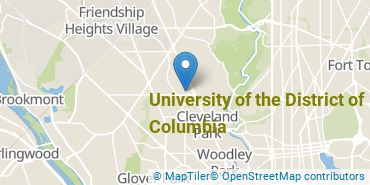
Contact details for University of the District of Columbia are given below.
| Contact Details | |
|---|---|
| Address: | 4200 Connecticut Ave Nw, Washington, DC 20008 |
| Phone: | 202-274-5000 |
| Website: | www.udc.edu |
How Do I Get Into University of the District of Columbia?
You can apply to University of the District of Columbia online at: www.udc.edu/apply/
Can I Afford University of the District of Columbia?
Student Loan Debt
Almost 66% of college students who graduated with the class of 2018 took out student loans, but that percentage varies from school to school. At University of the District of Columbia, approximately 29% of students took out student loans averaging $5,052 a year. That adds up to $20,208 over four years for those students.
The student loan default rate at University of the District of Columbia is 3.1%. This is significantly lower than the national default rate of 10.1%, which is a good sign that you'll be able to pay back your student loans.
University of the District of Columbia Undergraduate Student Diversity
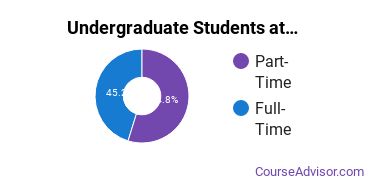
There are also 529 graduate students at the school.
Gender Diversity
Of the 1,332 full-time undergraduates at University of the District of Columbia, 44% are male and 56% are female.
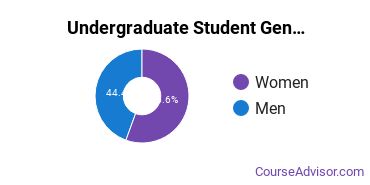
Racial-Ethnic Diversity
The racial-ethnic breakdown of University of the District of Columbia students is as follows.
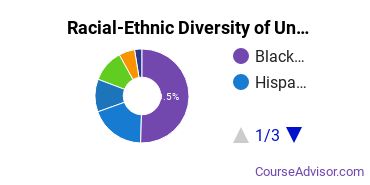
| Race/Ethnicity | Number of Grads |
|---|---|
| Asian | 34 |
| Black or African American | 672 |
| Hispanic or Latino | 254 |
| White | 73 |
| International Students | 150 |
| Other Races/Ethnicities | 149 |
Geographic Diversity
District of Columbia students aren't the only ones who study at University of the District of Columbia. At this time, 10 states are represented by the student population at the school.
Over 96 countries are represented at University of the District of Columbia. The most popular countries sending students to the school are Saudi Arabia, Nigeria, and Jamaica.
Online Learning at University of the District of Columbia
The following chart shows how the online learning population at University of the District of Columbia has changed over the last few years.
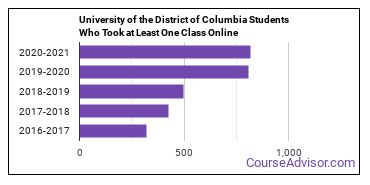
This school is the 10th most popular in District of Columbia for online learning according to the online graduations recorded by the Department of Education for the academic year 2020-2021.
This is the #1,689 largest growth rate of all schools that are only partially online. This refers to all students at University of the District of Columbia regardless of major.
References
*The racial-ethnic minorities count is calculated by taking the total number of students and subtracting white students, international students, and students whose race/ethnicity was unknown. This number is then divided by the total number of students at the school to obtain the racial-ethnic minorities percentage.
- College Factual
- National Center for Education Statistics
- Image Credit: By Matthew Bisanz under License
More about our data sources and methodologies.
Featured Schools
 Request Info
Request Info
|
Southern New Hampshire University You have goals. Southern New Hampshire University can help you get there. Whether you need a bachelor's degree to get into a career or want a master's degree to move up in your current career, SNHU has an online program for you. Find your degree from over 200 online programs. Learn More > |
